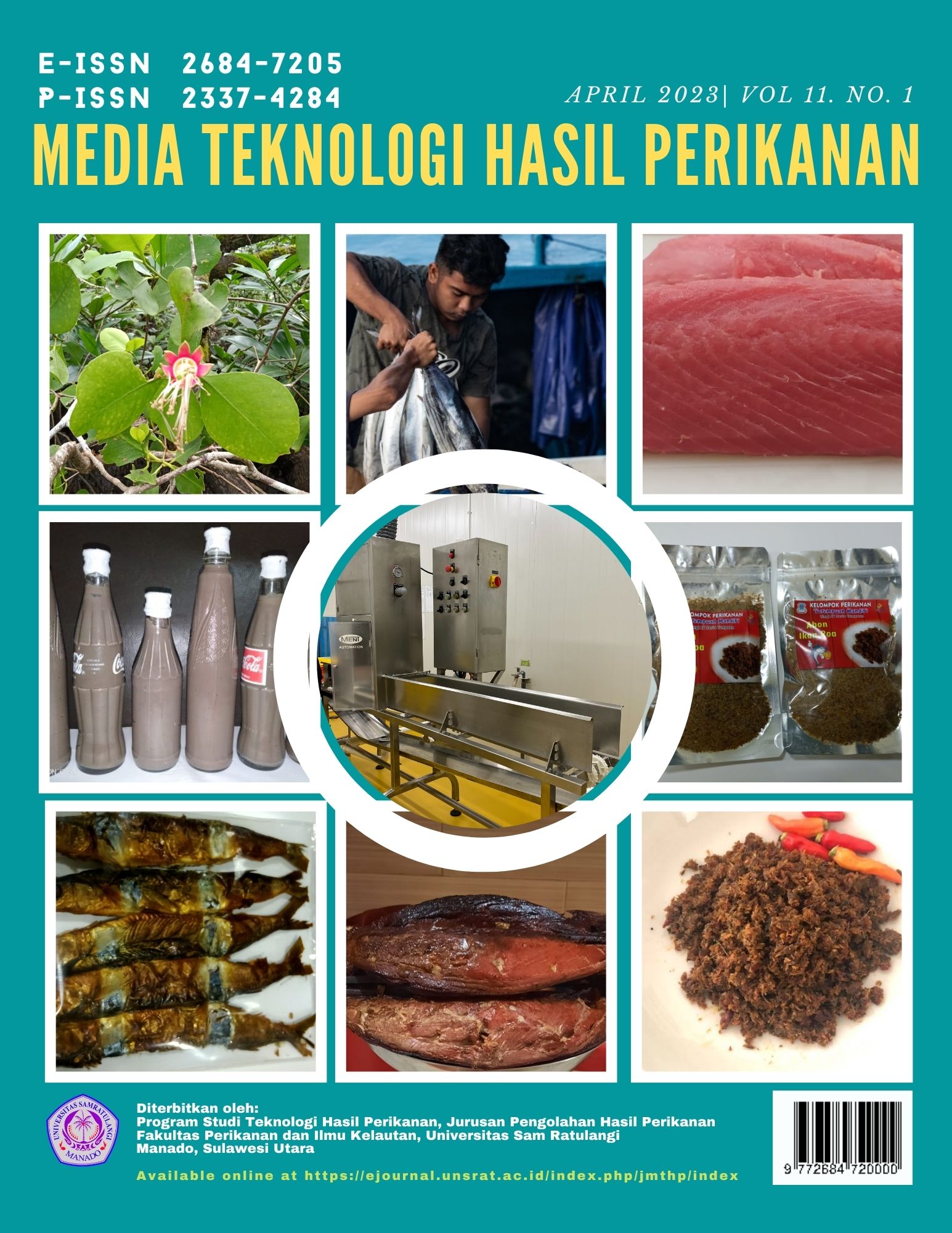Sensory and chemical characteristics and shelf life prediction of soybean tempeh with the addition of catfish (Clarias sp) bone meal
Mutu sensori dan kimia, serta penentuan umur simpan tempe kedelai dengan penambahan tepung tulang ikan lele (Clarias sp)
DOI:
https://doi.org/10.35800/mthp.11.1.2023.46206Abstract
Catfish (Clarias sp.) is a type of freshwater fish that has been widely farmed for generations. Usually it is consumed as a whole fish or its meat that processed as nuggets, shredded fish, or other products. The processing of these products produces a by-product in the form of catfish bones which can be used to make fish bone meal. Fish bones have important mineral sources including sodium, phosphorus and calcium. Calcium ion (Ca2+) is important for the development of human bones and teeth, especially in infants. So as to maximize the utilization of fish resources and reduce waste from the fishing industry, the purpose of this study was to determine the sensory and chemical quality of tempeh with the addition of catfish bone meal and to predict the shelf life of tempeh. The method used in this research is descriptive analysis method. The results of the sensory test with the hedonic test showed that the most preferred tempeh by the panelists was the addition of 2% (F3) bone meal with an appearance value of 7.2, smell/aromatic 6.9, and texture 6.9. Tempe added with 2% fish bone meal had a water content and protein content that complied with the SNI requirements, namely 58.58% and 20.65%, but the water content did not meet the SNI requirements, namely 4.01% and calcium content 142,73 mg/100 gram. Based on the results of the shelf life prediction, tempeh with the addition of fish bone meal was still suitable for consumption at 2 days of incubation because after two days there was an unwanted change in appearance, smell/aroma and texture.
Downloads
Published
How to Cite
Issue
Section
License
Copyright (c) 2023 Media Teknologi Hasil Perikanan

This work is licensed under a Creative Commons Attribution-ShareAlike 4.0 International License.
Authors who publish with this journal agree to the following terms:
- Authors retain copyright and grant the journal right of first publication with the work simultaneously licensed under a Creative Commons Attribution License that allows others to share the work with an acknowledgement of the work's authorship and initial publication in this journal.
- Authors are able to enter into separate, additional contractual arrangements for the non-exclusive distribution of the journal's published version of the work (e.g., post it to an institutional repository or publish it in a book), with an acknowledgement of its initial publication in this journal.
- Authors are permitted and encouraged to post their work online (e.g., in institutional repositories or on their website) prior to and during the submission process, as it can lead to productive exchanges, as well as earlier and greater citation of published work (See The Effect of Open Access).







